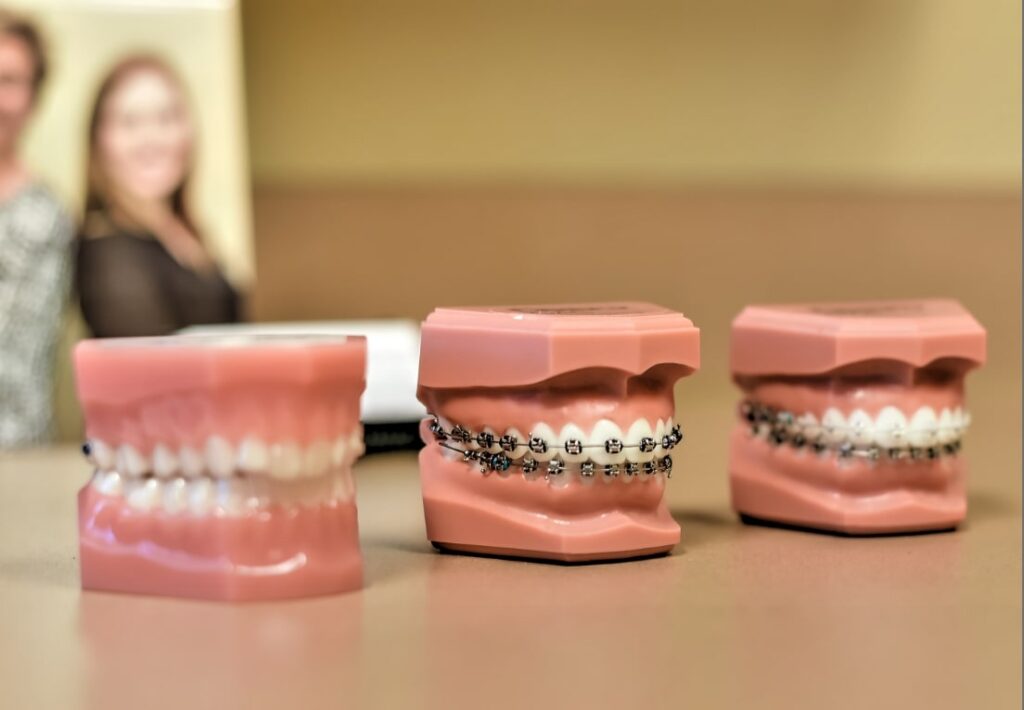Comprehensive Overview to Orthodontics Treatments for Remedying Dental Imbalances
In the world of orthodontics, the journey to attaining a completely lined up smile entails a myriad of treatments tailored to remedy oral misalignments. From typical braces to undetectable aligners and even surgical choices, the area of orthodontics provides a variety of solutions to deal with varying degrees of oral abnormalities. Understanding the ins and outs of each treatment, including their mechanisms, benefits, and prospective downsides, is essential in making notified choices about one's orthodontic treatment. As we navigate with the thorough guide to orthodontic procedures for fixing oral imbalances, the intricate details of each method will unfold, clarifying the course towards a unified and functional oral placement.
Orthodontic Procedures Review

In addition to clear aligners and traditional dental braces, orthodontists may also advise other treatments like headgear, palatal expanders, or retainers to address certain alignment concerns (orthodontist). These treatments are tailored per individual's unique demands and may include a combination of therapies to achieve the preferred results. Routine changes and tracking are crucial parts of orthodontic therapy to guarantee progression gets on track and to make any kind of needed modifications along the method. By undergoing orthodontic treatments, people can not only attain a straighter smile however additionally enhance their total oral wellness and feature.
Traditional Dental Braces: Just How They Function
When considering orthodontic therapies for dental imbalances, conventional dental braces stand out as a tried and true method for remedying teeth positioning. Standard braces are composed of braces, cables, and bands that function together to use constant stress on the teeth, slowly relocating them into the preferred alignment.
One secret aspect of exactly how traditional braces job is the process of bone makeover. As pressure is used to the teeth with the dental braces, the bone surrounding the teeth is improved to support the new tooth positions. This makeover is vital for the long-term stability of the corrected placement. Clients will certainly need normal adjustments at the orthodontist's office to make sure the dental braces continue to use the appropriate stress for effective teeth motion.
Invisible Aligners: Cons and pros
These clear, customized trays are virtually unseen when put on, making them an attractive choice for individuals looking for a much more visually pleasing orthodontic treatment. Patients can remove the aligners prior to eating or cleaning their teeth, minimizing the danger of food getting stuck in the device and streamlining the cleansing process.

Surgical Orthodontic Options
Surgical treatments in orthodontics present practical choices for resolving complex dental misalignments that may not be successfully settled through conventional about his orthodontic treatments. While standard dental braces and undetectable aligners can correct numerous orthodontic issues, certain cases need surgical intervention to achieve optimal results. Surgical orthodontic options are typically recommended for severe malocclusions, significant jaw discrepancies, and instances where the underlying bone framework requires alteration to accomplish appropriate positioning.
One typical surgical orthodontic treatment is orthognathic surgical procedure, which entails rearranging the jaws to remedy practical additional hints issues such as difficulty eating or talking. This surgical procedure is commonly done in partnership with an orthodontist who helps straighten the teeth prior to and after the procedure. Surgical orthodontics may additionally include procedures to reveal influenced teeth, eliminate excess gum tissue, or reshape the jawbone to create a much more harmonious facial profile.
Prior to taking into consideration medical orthodontic choices, clients go through a thorough examination to establish the requirement and prospective advantages of such treatments. cumming orthodontics. While surgical treatment may appear daunting, it can dramatically enhance both the function and aesthetics of the smile in situations where conventional orthodontic therapies fall short
Retainers and Post-Treatment Treatment

Failing to comply with post-treatment care directions can result in relapse, where the teeth slowly relocate back in the direction of their initial placements. Consistent retainer wear, good oral hygiene, and regular dental check-ups are important for preserving the results accomplished through orthodontic surgical treatment and making sure the lasting security of the remedied oral positioning.
Final Thought
In verdict, orthodontic treatments use different choices for remedying dental misalignments. Conventional braces use steel braces and cables to move teeth into proper alignment. Unnoticeable aligners provide a more very discreet option however might not appropriate for all instances. Surgical orthodontic alternatives are offered for much more severe imbalances. Retainers are generally made use of post-treatment to preserve the new placement. Generally, orthodontic procedures can effectively boost oral health and visual look.
As we navigate with the thorough guide to orthodontic procedures for correcting dental imbalances, the complex details of each technique will unravel, shedding light on the path towards a harmonious and useful dental placement. - cumming aligners
One of the most typical orthodontic therapies is the use of dental braces, which are composed of metal braces and cords that dentist in your area apply mild stress to slowly change teeth right into the preferred placement.When considering orthodontic treatments for oral misalignments, conventional dental braces stand out as a time-tested technique for dealing with teeth positioning. Furthermore, unseen aligners may not be appropriate for intricate orthodontic issues that need even more substantial teeth movement, as they are normally advised for mild to moderate situations. Retainers are custom-made orthodontic devices created to hold teeth in their corrected positions after the completion of orthodontic therapy.